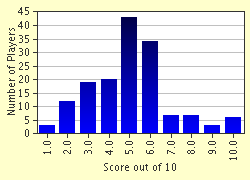Quiz Answer Key and Fun Facts
1. Though they were neighbors, intermarried with each other frequently and shared an almost identical material culture, these three tribes spoke three completely unrelated languages;
2. This tribe had what anthropologists, perhaps arbitrarily, describe as being the only truly maritime economy in California:
3. The following is the only region of California in which tribes were known to have practiced systematic sustenance agriculture;
4. The following tribe spoke a language that has no known relatives in California and that is still something of a mystery in terms of its origins;
5. Which Californian tribe is famous for producing some of the finest basketry in the world?
6. Ishi, Theodore Kroeber's "last wild Indian of North America," was a member of which tribe?
7. In the early 19th century, representatives of England's Hudson Bay Company entered the northern Sacramento River Valley and reported encountering riverside towns of over 10,000 inhabitants.
8. As did many other peoples along the Pacific coast of North America, Native Californians relied heavily upon annual salmon runs for food. During the 18th and 19th centuries the Sacramento and San Joaquin Rivers are thought to have hosted some of the world's largest salmon runs.
9. This tribe, while not governed by any single unit, was spread across North-Central California, from the Yosemite region in the Sierra Nevada, to the coastal region around San Francisco Bay.
10. True or false; During the 1850's the newly enacted California state government put out a bounty of fifty dollars for every dead native.
Source: Author
maddogmorgan
This quiz was reviewed by FunTrivia editor
thejazzkickazz before going online.
Any errors found in FunTrivia content are routinely corrected through our feedback system.


